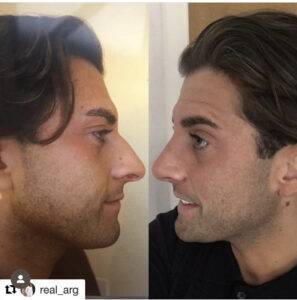Non surgical Rhinoplasty can be seen as an alternative to traditional rhinoplasty. It is generally used if you require a less intense change in your nasal area. Many professionals recommend sticking with traditional rhinoplasty if one is looking for a life changing procedure, as the job is often done to a more convenient standard with surgical rhinoplasty, however we explain below the alternative in non surgical rhinoplasty, and if you require more information then please don’t hesitate to contact Dr. Frati’s helpful team either by our contact form page or phone.

To see Dr. Frati’s work please visit our nose job before and after page
A non surgical rhinoplasty, also known as a “liquid nose job” or “15-minute nose job,” involves a dermal filler procedure that alters the shape of the nose for up to six months. This procedure is suitable for individuals who want to correct bumps or reduce the angularity of their nose but are not ready for a permanent solution or concerned about the risks and recovery time of traditional rhinoplasty. While the procedure is less complex than surgical rhinoplasty, altering the nose’s shape carries some risks. Dr Frati and his team provide information about the non surgical rhinoplasty’s procedure’s cost, recovery, and pros and cons. Read on to find out more…
What is Non Surgical Rhinoplasty?
Non surgical rhinoplasty uses dermal filler ingredients to change the shape of your nose. A gel-like injectable ingredient (usually hyaluronic acid) is inserted underneath your skin in the areas where you wish to create smoother lines or volume. Sometimes, botox is also used. The filler ingredient settles into where it’s injected in your deeper skin layers and holds its shape. This can change the look of your nose for anywhere from 4 months to 3 years, depending on your skin, your desired results, and the ingredient used. With traditional rhinoplasty, you receive instant results after your initial recovery period.
What’s the non surgical rhinoplasty procedure like?
The procedure for non surgical rhinoplasty is fairly simple. After an initial consultation where you discuss your desired results, your doctor will have you lie down with your face tilted up. You may have a topical anesthetic applied to your nose and the surrounding area so you won’t feel pain from the needle. After the anesthetic takes effect, your doctor will inject the filler into the area around your nose and maybe the bridge of your nose itself. You might feel a slight pinching or pressure while this is done. The whole process can take from 15 minutes or less to 45 minutes.
Targeted areas
Non surgical rhinoplasty targets the bridge, tip, and sides of your nose. Fillers can be injected around any part of your nose to modify its shape. This procedure works well if you want to:
- smooth out small bumps in your nose make the tip of your nose more prominent
- add volume to your nose
- lift the tip of your nose
- Additionally, if you have a mild prominent bump of the bridge of your nose, it can camouflage it and smooth the contour of your nose profile.
Non surgical rhinoplasty won’t be able to give you your desired results if you want your nose to look smaller or if you’re looking to smooth out more prominent bumps, this is done by traditional rhinoplasty.
How much does non surgical rhinoplasty cost?
Non surgical rhinoplasty is considered a cosmetic procedure, so it is not covered by insurance. Unlike surgical rhinoplasty, there is no medical reason for a doctor to recommend this procedure. The cost of the procedure depends on the type of filler used, the provider, and the number of injections required. Your clinician will provide you with a detailed cost breakdown after the consultation. a rough estimate of non surgical rhinoplasty cost bottom end, is around £400.

Risks and side effects of non surgical Rhinoplasty
For most people, the only side effect of non surgical rhinoplasty they’ll see is a little redness and sensitivity in the area of the injection in the day or two after the procedure. Other possible side effects include bruising at the site of the injection or swelling filler migration, meaning the injectable ingredient migrates to other areas of your nose or the area under your eyes, creating a “wavy” or “overfilled” look nausea.
The nose is a sensitive area as it is filled with blood vessels, and is close to your eyes. That can be why non surgical rhinoplasty is somewhat more complicated than other kinds of injectable filler procedures. Because of this, many trained and careful plastic surgeons will tend to err on the side of using less filler in your nose rather than overfilling the area. One case study observed that complications are more likely to occur when an unlicensed provider attempts this procedure. Possible serious complications can include tissue death, vascular complications and vision loss.
Non surgical rhinoplasty vs. traditional rhinoplasty
Non surgical rhinoplasty is a good option for those who want to make small changes to their nose without undergoing general anesthesia. It is also ideal for those who want to experiment with how modifications might look. However, if you want dramatic and permanent changes to the shape of your nose, traditional rhinoplasty may be a better option.
Pros of non surgical rhinoplasty include a quick recovery, minimal downtime, and lower cost compared to traditional rhinoplasty. The results are not permanent, which means that you can easily reverse the changes if you’re not happy with how your nose looks.
On the other hand, non surgical rhinoplasty has some cons. The side effects, such as bruising and swelling, can be bothersome. There’s also a possibility of misplaced needles and visible bleeding under the skin or damage to vision, although this is rare. Long-term side effects of this procedure are not yet well studied, and insurance won’t cover any of the costs.
Traditional rhinoplasty, on the other hand, offers bold and permanent results. It does not require any “re-up” procedures, unlike non surgical rhinoplasty. Since it is an established procedure, possible complications and side effects are well known. Insurance could also cover it if you have related medical issues, such as breathing difficulties.
However, traditional rhinoplasty has some cons. If you don’t like the results, there’s not much you can do besides waiting for it to heal and then getting another rhinoplasty. This is why it is important to go to a reputable surgeon such as Dr. Frati. This procedure is usually conducted in a hospital under general anesthesia, and risks of complications like infection can be slightly higher. Traditional rhinoplasty also costs significantly more than non surgical rhinoplasty as you are paying for a permanent procedure.
Rhinoplasty with Dr. Frati

